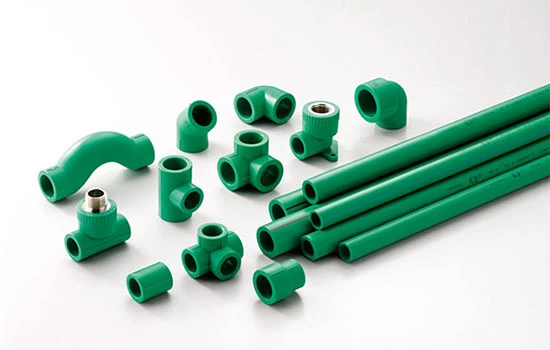Introduction to the Vietnam Plastic Pipe and Fittings Market
The Vietnam plastics pipe and fittings market has witnessed remarkable growth over the past few years, driven by rapid urbanization, infrastructure development, and an increasing demand for durable and cost-effective piping solutions. As Vietnam continues to modernize its cities and expand its industrial base, the need for efficient water supply and sanitation systems has fueled the demand for plastics pipes and fittings.
In this article, we will explore the various factors contributing to the growth of the plastics pipe and fittings market in Vietnam, the key trends shaping the industry, and the challenges it faces. We’ll also take a look at the types of plastic pipes commonly used and the future outlook for this booming sector.
Market Growth in Recent Years
Rising Demand Due to Urbanization
One of the primary drivers of the Vietnam plastics pipe and fittings market is the country’s rapid urbanization. As more people move into cities, there is a growing need for reliable water supply and sewage systems. Plastic pipes and fittings are essential components of these systems, as they offer durability and are easy to install, making them ideal for both residential and commercial projects.
Government Initiatives and Infrastructure Development
The Vietnamese government has launched several infrastructure projects aimed at modernizing the country’s water supply, sanitation, and drainage systems. These initiatives have increased the demand for plastic pipes, as they provide a cost-effective alternative to traditional materials like metal. Additionally, government incentives for eco-friendly construction practices are encouraging the use of sustainable plastic piping solutions.
Increasing Use in Residential and Commercial Sectors
The expansion of the residential and commercial real estate sectors has further driven the demand for plastic pipes and fittings. As new housing developments and office buildings are constructed, the need for reliable plumbing and water management systems has risen, and plastic piping is becoming the material of choice for many developers due to its long lifespan and affordability.
Key Factors Driving the Market
Durability and Cost-Effectiveness of Plastic Materials
Plastic pipes are known for their durability, resistance to corrosion, and ability to withstand high pressure. These qualities make them an attractive option for plumbing and drainage systems, particularly in regions where weather and environmental conditions can affect traditional materials like metal or concrete.
Corrosion Resistance Compared to Metal Pipes
Unlike metal pipes, plastic pipes do not rust or corrode over time, making them an ideal solution for water supply systems that may be exposed to harsh chemicals or varying water qualities. This characteristic has increased the demand for plastic piping in Vietnam’s coastal regions and industrial zones.
Adoption of Eco-Friendly and Sustainable Practices
As the world moves toward more sustainable building practices, plastic pipes that are recyclable and eco-friendly are becoming more popular. Manufacturers are increasingly developing pipes made from recycled materials or materials that can be easily repurposed at the end of their lifecycle, helping to reduce the overall environmental impact of infrastructure projects.
Types of Plastic Pipes and Fittings
PVC Pipes
PVC (Polyvinyl Chloride) pipes are the most commonly used plastic pipes in Vietnam, particularly in residential plumbing systems. They are lightweight, affordable, and easy to install, making them a go-to choice for water supply and drainage applications.
HDPE Pipes
HDPE (High-Density Polyethylene) pipes are known for their flexibility and high resistance to impact. They are often used in industrial and high-pressure applications, such as gas distribution and irrigation systems.
PPR Pipes
PPR (Polypropylene Random Copolymer) pipes are ideal for hot and cold water systems due to their temperature resistance and durability. They are commonly used in both residential and commercial plumbing systems, especially where long-term reliability is a priority.
Industry Segmentation
Residential Construction
Plastic pipes and fittings are widely used in Vietnam’s booming residential construction sector, providing reliable water supply, drainage, and waste management solutions for new housing developments.
Industrial Applications
In industrial settings, plastic pipes are used for transporting chemicals, gases, and other materials. Their resistance to corrosion and high pressure makes them ideal for these environments.
Water Supply and Sanitation
The demand for plastic pipes in Vietnam’s water supply and sanitation systems continues to grow as the government invests in improving public infrastructure. These pipes are essential for ensuring a reliable and clean water supply to both urban and rural areas.
Challenges Facing the Market
Competition from Alternative Materials
While plastic pipes dominate the market, they still face competition from materials like metal and concrete, particularly in large-scale infrastructure projects where durability is a key concern.
Environmental Concerns and Plastic Waste
The use of plastic in construction has raised concerns about its environmental impact, particularly in terms of waste management. As Vietnam grapples with plastic pollution, the industry faces pressure to develop more sustainable and recyclable materials.
Price Fluctuations in Raw Materials
The cost of raw materials used in plastic pipe manufacturing, such as polyethylene and PVC, can be volatile, leading to fluctuations in the overall price of pipes and fittings. This can impact both manufacturers and consumers.
Competitive Landscape of the Vietnam Plastic Pipe and Fittings Market
Major Players in the Market
Several major manufacturers dominate the plastic pipe and fittings market in Vietnam, offering a wide range of products that cater to different sectors. These companies have established themselves as leaders through innovation, product quality, and customer service.
Regional Distribution
The demand for plastic pipes varies across regions, with urban areas driving the highest growth due to ongoing construction projects. However, rural regions are also seeing increased adoption as water supply systems are improved.
Technological Advancements in Manufacturing
New manufacturing technologies are helping to improve the efficiency of plastic pipe production, reducing costs, and enhancing the quality of the products. Innovations such as automated production lines and the use of recycled materials are becoming more common in the industry.
Impact of Sustainability Trends
Growing Preference for Eco-Friendly Materials
As environmental awareness increases, consumers and businesses are looking for more sustainable piping solutions. This has led to the creation of plastic pipes made from recycled materials or designed to be fully recyclable at the end of their lifecycle.
Innovations in Recycling and Plastic Reuse
The industry is focusing on finding ways to recycle and reuse plastic pipes, reducing waste and promoting a circular economy. Companies are investing in technologies that allow for the recycling of used pipes, further boosting the sustainability of plastic materials.
Future Outlook and Projections
Expected Growth Rate
Ongoing infrastructure development and the increasing demand for durable and cost-effective piping solutions will continue to drive steady growth in the Vietnam plastic pipe and fittings market.
Emerging Technologies and Materials
New materials and technologies are likely to shape the future of the plastic pipe market, with a focus on sustainability and environmental impact. Companies are likely to invest in research and development to create pipes that are more efficient and eco-friendly.
Potential Challenges and Opportunities
While the market faces challenges such as competition from alternative materials and environmental concerns, it also presents opportunities for growth, particularly in the adoption of sustainable practices and the development of new materials.
Government Regulations and Their Impact
Environmental Protection Policies
The Vietnamese government has implemented policies aimed at reducing plastic waste and promoting environmental protection. These regulations are encouraging the use of recyclable and eco-friendly materials in construction projects.
Incentives for Sustainable Infrastructure Projects
Government incentives for sustainable construction practices are likely to boost the demand for plastic pipes that meet environmental standards. Companies that adopt green technologies and materials are likely to benefit from these initiatives.

Vietnam’s Role in the Global Plastic Pipe and Fittings Market
Export Opportunities
Vietnam is emerging as a key player in the global plastic pipe and fittings market, with opportunities for export to other Southeast Asian countries and beyond. The country’s growing industrial base and investment in modern manufacturing technologies are helping it compete on the global stage.
Position in Southeast Asia
As one of the fastest-growing economies in Southeast Asia, Vietnam is ready to lead the regional plastics pipe and fittings market. Its strategic location and access to key markets make it an attractive destination for manufacturers and investors alike.
Conclusion
The Vietnam plastics pipe and fittings market is experiencing robust growth, driven by urbanization, infrastructure development, and a growing demand for cost-effective and sustainable materials. With ongoing government support, advancements in manufacturing technologies, and a focus on environmental sustainability, the future of the market looks promising. However, the industry must continue to address challenges such as competition from alternative materials and environmental concerns to maintain its upward trajectory.
FAQs
- What are the key drivers of the Vietnam plastic pipe and fittings market?
Urbanization, infrastructure development, and government initiatives to improve water supply and sanitation systems are key drivers of the market. - Which plastic pipe type is most commonly used in Vietnam?
PVC pipes are the most commonly used plastic pipes in Vietnam, especially in residential plumbing systems. - How do government policies impact the market?
Government policies promoting sustainable construction practices and environmental protection are driving the demand for eco-friendly plastic piping solutions. - What challenges does the market face?
The market faces challenges such as competition from alternative materials, environmental concerns, and fluctuations in raw material prices. - What is the future growth potential of the plastic pipe and fittings market in Vietnam?
The market is expected to continue growing, with opportunities arising from advancements in manufacturing technologies and increasing demand for sustainable materials.

















